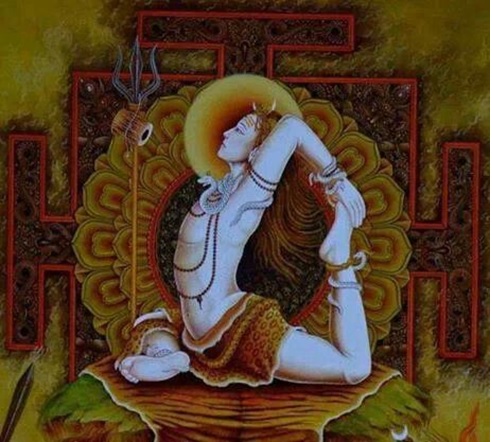Āyus (आयुस्) means life and Veda (वेद) means spiritual wisdom. Yoga (योग) comes from the root yuj-(युज्) which means to yoke or unite.
When we think about uniting in yoga, we always assume that those elements we desire to unite are already in their prime state, ready to be connected. But rarely is this the case. Often we come to study āsana and the philosophies of yoga because we feel disconnected or un-united. It would be silly to think that all we need to do when we feel disconnected would be to “just connect.” That is as frustrating a concept as someone telling you to smile when you feel sad. The process of studying yoga is one where over time we develop a strong discerning principle. This discernment enables us to begin to perceive those elements or experiences to which we are yoked that are currently causing us suffering or have caused us suffering in the past. When we develop this discerning principle, we can see and feel that which keeps us un-united, dis-harmonious, or in dis-ease. Usually, this awareness provokes us to make choices that send us closer to the process of uniting, of yoking, of yuj to Divinity and higher states of Consciousness.
Āyurveda is a tool we can use to begin to sever connections of old or unsupported yoking. When we do this, we are permitted the chance to create new connections that will unite us to our true nature, Prakrti (प्रकृति) – or deepest true nature as Spirit. Through Āyurveda, we learn vocabulary which allows us to observe ourselves, our environment, our thoughts, and our actions in a way that is less personal or attached. The practice of this kind of awareness is a practice of vairāgya (वैराग्य) ultimately. Our mind becomes more astute through this practice. We learn to see what things and experiences are made of by using descriptive adjectives of perceivable qualities like : hot, cold, sharp, dull, fast, slow, dry, moist etc. We can also use these guṇas (गुण) to observe the states within us as well.
Yoga and Āyurveda are often thought of as methods of balance. While this is only partially true, to find balance, we would need to first become aware of what we have too much of and conversely, also what we have too little of. Once we see this clearly and truthfully, we can move toward balancing ourselves by reducing areas we have too much and/or adding to areas where we have lack. This process is possible to do in all aspects of our lives whether it be with food and drink, conversation, education, sexual activity, work, study, travel, exercise, meditation, pranayama etc.
When we think of Āyurveda applied specifically to the Yoga practice, nothing changes from that which is described above. There is no āsana practice executed the same way by every person. There is no one unchanging Āyurveda practice done by everyone. So, when we consciously apply Āyurvedic principles to Yoga, the uniqueness multiplies.
As teachers and/or practitioners of Yoga however, we can observe the guṇas within ourselves before we practice or teach. Depending on what we notice and what we are trying to achieve, we can either use them to reduce themselves or increase themselves (sāmānya – सामान्य), or aim to balance them with differentiation (visheṣa – विशेष). We can also take clues from the time of day, season of the year, our age or our students ages, our workload, our distance from where we consider home, our energy levels, our sleep, our ability to digest etc. All of this can give us a clearer image of how close or far we are from our innate nature. From here we can adapt the way we practice āsana to support the search for Union.
